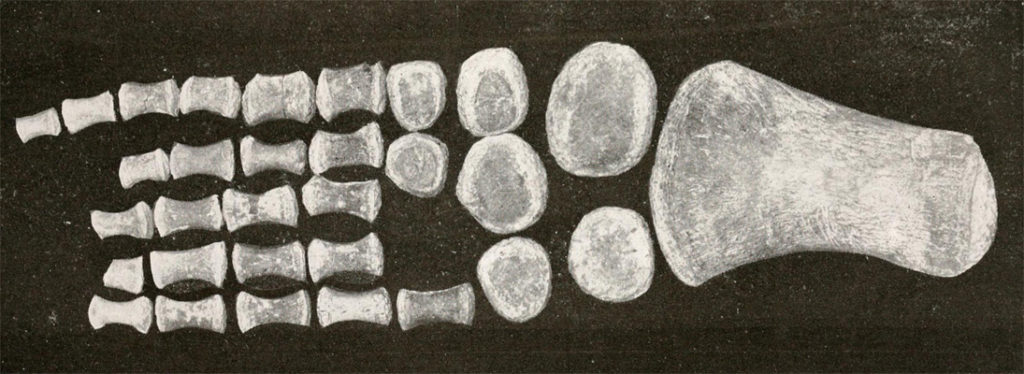Ogmodirus

Sauropterygia
Eosauropterygia
Eusauropterygia
Pistosauroidea
Pistosauria
Plesiosauria
Plesiosauroidea
Elasmosauridae
‘O. martini’
The type skeleton of ‘Ogmodirus’ was collected in 1909 by C. Boyce from the upper Greenhorn Limestone Formation (Lower Turonian, Late Cretaceous) of Cloud County (near Aurora), Kansas (Storrs 1999, Schumacher and Everhart 2005). The specimen, KUVP 441, is a partial skeleton consisting of partial vertebral column (51 cervical vertebrae, 18 caudal vertebrae), limb, and girdle elements. Originally named and briefly described by Williston and Moodie (1913), this long-necked plesiosaurian was later described and figured in more detail by Williston and Moodie (1917). ‘Ogmodirus’ is based on juvenile skeleton and is regarded as invalid (Storrs 1999). For example, Welles (1962) considered the taxon a nomen vanum and Storrs considered it a nomen dubium and referred it to “?Elasmosauridae indeterminate”, because “the taxon cannot be characterized on the basis of the relatively poort type materiai…” (p.6). The species name was invalidly emended by Moodie (1916) from ‘martini’ to ‘martinii’. This change was followed by Williston and Moodie (1917) but the original spelling (‘martini’) takes precedence (Schumacher and Everhart 2005).
The species name ‘O. martini’ honours Mr H. T. Martin “in appreciation of his long, faithful and intelligent work in the Cretaceous deposits of Kansas” (Williston and Moodie 1917, p. 62–63).
A second species was based on KUVP 434. ‘O. ischiadicus’ was transferred to the genus by Willison and Moodie (1917). However, given the invalid status of Ogmodirus as a genus, and the non-diagnostic state of the type material of the species (KUVP 434), this referral is unjustified (Storrs 1999). KUVP 434 was originally described as ‘Polycotylus ischiadicus‘, later ‘Elasmosaurus ischiadicus‘, then ‘Ogmodirus ischiadicus‘. Welles (1943) erected a genus based on this material (Thalassiosaurus ischiadicus), but eventually discarded the taxon entirely (Welles 1962) because it is based on non-diagnostic material (Storrs 1999).


